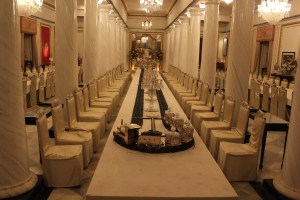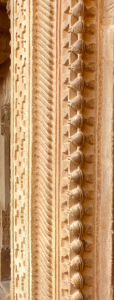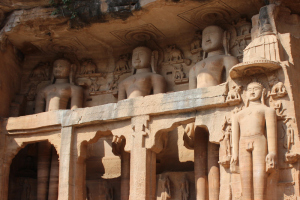Glorious Gwalior
- Tamanna Mohapatra

- Jun 21, 2015
- 2 min read
This blog piece has been pending since December 2014. I am not sure why. Anyway, it’s finally done and published and I am grateful for the memories made while visiting this place and therefore am sharing the same, hopefully to inspire others to visit and create memories of their own.
Gwalior is a small, old-time city in the state of Madhya Pradesh, a state that literally means ‘center of India’. It’s famous for having an old world aura in the now modern environment. It’s also famous for pre-British era monuments and architecture in the form of forts and temples. The creators of the famous Taj Mahal (Mughals) at one time ruled Gwalior, in fact the famous Gwalior Fort was their royal prison.
We stayed there only for one day one night but even in that short period of time we were able to get a strong feel of the place. The Fort is definitely worth taking a guided tour of. The architecture is something splendid and can only be experienced in person. It consists of two main palaces, Gurjari Mahal and Man Mandir. At one point during the tour when the guide was showing me the place where they used to hang prisoners, all I needed to do was close my eyes to picture the scene in front of me. I guess some of the school history lessons were still floating around in my sub conscious mind and aided me to recreate the scene.
We also really enjoyed seeing the nighttime sound and light show at the fort. Anyone planning to visit Gwalior should put that as a ‘must do’ on their agenda. It’s basically someone narrating the history of the fort with the fort in the background dressed up in various lights. There is a nice seating area and both the sounds and light help bring the fort alive for the duration of the show.
The other amazing architectural feat is the nearby gigantic Jain (a religion founded in India, similar to Buddhism) sculptures carved into the rocks. They are situated along the cliff-face of the fort. It is nice to know that Gwalior was once the home to more than one religion-at one point or another, Gwalior welcomed Jain, Hindu, and Muslim practitioners into its culture.
Last but certainly not the least, another unique architectural wonder of Gwalior is the Jai Vilas Palace. History tells that the palace was built using prisoners captured and kept in the Gwalior Fort. Besides an eclectic mix of old and new pieces, it houses the largest known carpet in Asia; built with convict labor over a 12-year period.
Besides the carpet (which we incidentally did not get to see), the other most talked about piece in the Palace/museum is the banquet room, which has a small train model with tracks going around the huge table. The train was for guests to take food from the train carriages instead of walking to various parts of the table. How ridiculously extravagant! But isn’t that why we travel? To see and experience these ‘Believe it or not! ‘moments? So here’s to happy traveling for all..in person, through books, or even by reading blog pieces such as this one
#gwalior, #gwalior fort, #Indiaculture, #jai vilas, #travel india, #foodtrain, #lightandsoundshow, #mptourism, #indansculptures















from (shabdpratap.wordpress.com, vajpayee04@gmail.com)
wonderful